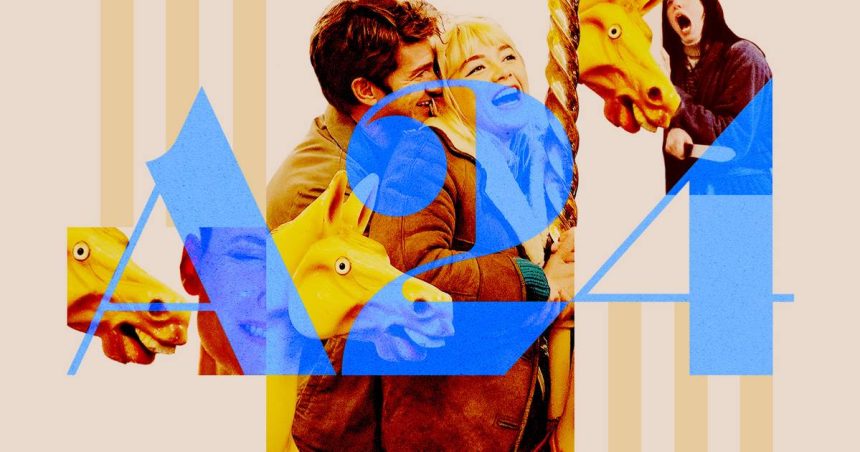When a chronically online film studio like A24 makes a weepy, romantic film like We Live in Time, one might expect a promotional campaign designed around the heightened emotion of the movie. While there was some of that sappiness, A24 marketed We Live In Time with, well, a horse: a chaotic, scene-stealing, carousel-horse turned meme.
So A24 mounted the meme and trotted away with it—but it didn’t entirely follow an expected playbook.
Horsing around
On August 13, the X account Film Crave posted a first-look still from We Live in Time. In it, stars Andrew Garfield and Florence Pugh are canoodling on a carousel, the very picture of romance. But it was the prominently placed, maniacal-looking prop carousel horse that attracted unusual levels of interest online. The horse was soon put into edits of iconic films, TV shows, and various awkward scenarios that delighted its internet fans and kept the film top of mind.
“Without him, we really are nothing,” Garfield said in a red-carpet interview with etalk at the Toronto International Film Festival in early September, joking that “no one would be aware of this film if it wasn’t for that fucking horse.”
When an organic audience reaction like this happens, speed can be of the essence, according to Samantha Schuster, connections director at creative agency VML. She typically recommends brands react to memes within 24 hours to about a few days after they emerge to leverage the moment before the masses move on to the next trend, she told us.
“If you catch it a week later, chances are, the internet has moved on…It all just moves so fast these days that you have to be really nimble and agile when it comes to meme marketing,” Schuster said.
But A24 didn’t immediately respond to the meme on its accounts; the We Live In Time X account only reposted its first mention on September 6. The brand then began to lean in more once Garfield began his press tour, sending him to an October 2 appearance on The Late Show with Stephen Colbert with an A24-produced T-shirt featuring a print of the carousel horse’s head as a gift for the host. Garfield was also spotted sporting a denim jacket with an embroidered horse on the chest that same day, though it was not confirmed to be part of the studio’s effort.
Get marketing news you’ll actually want to read
Marketing Brew informs marketing pros of the latest on brand strategy, social media, and ad tech via our weekday newsletter, virtual events, marketing conferences, and digital guides.
By waiting to more directly interact with the meme, Schuster said A24 used Garfield’s celebrity power to extend the horse’s longevity. “Maybe they saw the internet kind of latch on to this moment that they shared, and they thought, ‘You know what? We’ve got the tools to fuel this fire a little bit more. We’re going on a marketing tour. Let’s bring it back and give the internet a chance to fall in love with it all over again,’” she said.
A24 hasn’t made the horse T-shirt available to the public but has promised it’s “coming soon.” Schuster told Marketing Brew that the decision to turn a meme into a tangible product is all about social listening, noting that “the internet will tell you what they want from you.” She suggested that the studio could have seen some fans creating their own items inspired by the meme, like this fan’s earrings.
Why would such a serious film attach itself to the seemingly incongruous absurdity of the meme? Meme marketing isn’t always about the message of the product itself; instead, it’s a way to tap into organic reach and show off the personality of a brand, according to Schuster.
A24 is in on the joke—even if the movie it wants you to watch is more of a tearjerker.
Read the full article here









